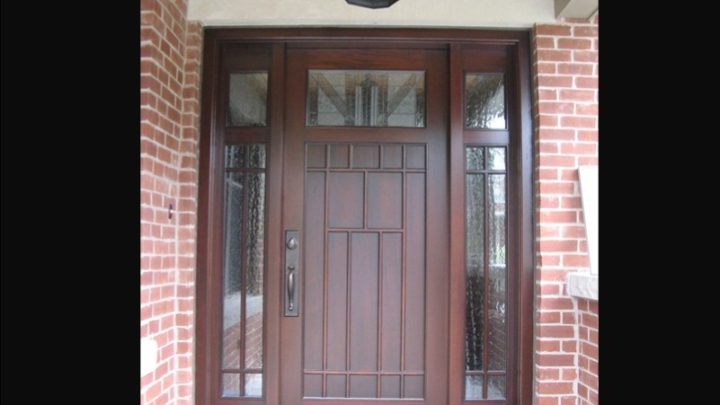The FBI’s Uniform Crime Reporting Program estimates that 2.2 million homes are burglarized each year.
Statistics show that forcible entry, such as kicking in a door or prying the lock, accounts for about 61 percent of these burglaries, while entry without force, such as through an unlocked door or window, accounts for about 33 percent.
The best way to protect your home and family from potential burglars is to make sure your exterior doors are as secure as possible. Follow these tips to burglarproof your doors.
- Replace hollow doors. Hollow doors are made of a thin sheet of veneer over a cardboard core, and are very easy to break. Front and back entry doors should be windowless and made of solid core fiberglass, solid wood or metal. To determine whether your doors are hollow, knock on them.
- Replace damaged doors. Doors that are cracked or warped are vulnerable and need to be replaced.
- Fortify your door frames. Door frames are often simply tacked to the wall and can be easily kicked in or pried loose with a crowbar. Install 3-inch screws along your door frames and door stop, ensuring that the screw penetrates the stud in your wall.
- Secure your sliding glass doors. Sliding glass doors are a favorite point of entry for burglars, who pry open the slider, lift the door off of its tracks, or break the glass. To secure these doors, install locks on both the top and bottom of the door. Consider installing a security grate on the outside of your sliding glass doors or a polycarbonate panel over the glass on the inside. Install screws along the tracks to prevent thieves from removing the doors, and don’t rely on a stick placed across the bottom of the door to keep you secure.
- Permanently lock your French doors. Burglars can easily enter your home through French doors simply by inserting a screwdriver into the weatherstripping to force the top and bottom locks open. Once these bolts are unlocked, the doors can be pushed open even if the deadbolt near the doorknob is in place. To prevent this method of entry, lock the top and bottom sliding bolts on the inactive door, then secure them into place with small screws beneath the bolts. To prevent the glass window panes from breaking easily, apply security film to the panes on the inside.
- Install quality locks on all of your exterior doors. Install high-quality deadbolts on all exterior doorknobs, in addition to the lock that’s built into the doorknob. Locks should be made of solid metal, with no screws visible on the exterior side. The throw bolt should be at least one inch long.
- Replace strike plates. The metal plate that surrounds the hole into which your bolt slides should be made of heavy-duty, high-quality metal. Secure it to the stud behind the door jamb with 3-inch screws.
- Lock your doors. The first thing a burglar will do is try to open your door; one-third of all break-ins occur through unlocked doors. Even if you’re only going to be gone for a few minutes, make sure all of your doors are locked. Before you retire for the evening, double-check all of your doors to ensure they’re properly locked.
Your reno survival guide: A home or cottage renovation can be one of the most stressful events of your life. Our easy-to-understand 7-step guide is designed to take the pain out of your next reno and to help you maintain your budget and keep your sanity. Download now



